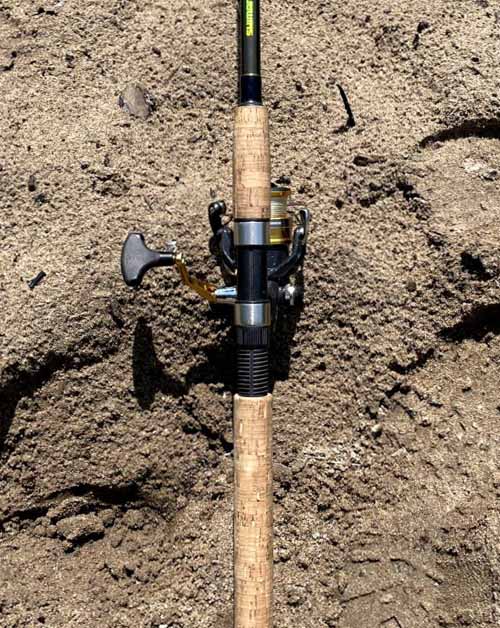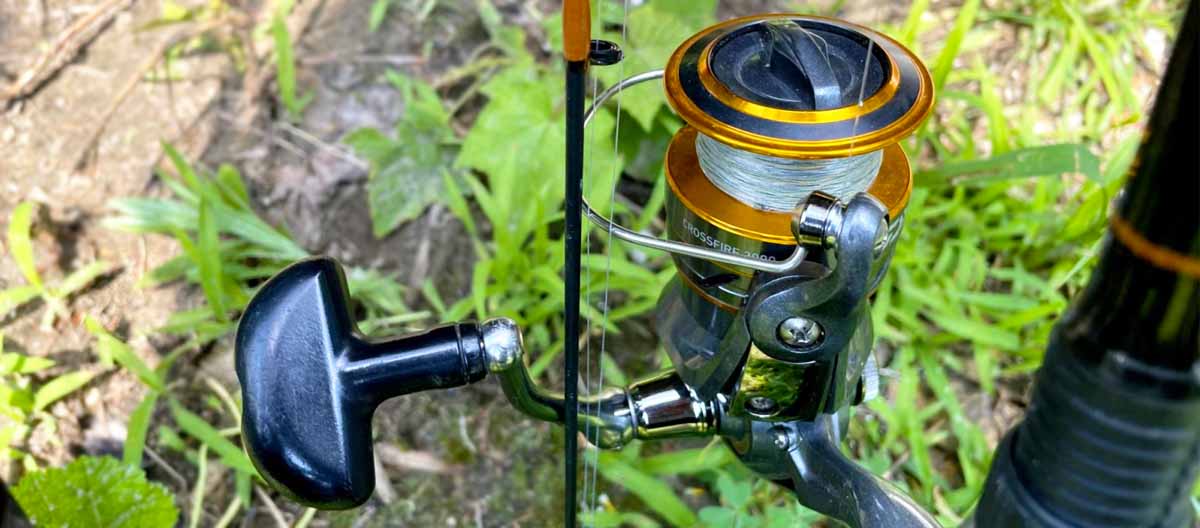How to Choose a Fishing Reel
When shopping for a fishing reel, there are four main features I look for to help narrow down my options:
∙ Size, power, and action of the rod I’ve chosen
∙ Smoothness of the reel
∙ Overall quality of the reel
∙ The look of the rod and reel combined
I usually already have an idea as to the size, power, and action of the rod I want to purchase. This automatically tells me the size of the fishing reel I need to match it with. Just like rods, all reels come in different sizes. Small reels can handle light lines, and bigger reels can handle heavy lines. Small reels match better with smaller, lighter, faster rods while big reels match better with bigger, slower, heavier rods. Needless to say, small reels are for small fish and big reels are for big fish.

Gear ratio: Each fishing reel has a gear ratio indicated on the box and sometimes on the side of the reel. Spinning reels range from 5.2:1 to 6.2:1. This ratio tells you how fast the reel can retrieve your line. For every full rotation of your handle, the bail on your reel rotates ‘X’ amount of times. If you have a reel with a gear ratio of 5.2:1, your bail will spin 5.2 times per one full turn of the handle. Unless you consider yourself a more advanced angler, there's no need to worry about which gear ratio is better. The only difference in ratios is how fast and deep you can fish certain baits.
Fishing Reel Size and Capacity
There are two ways to tell the basic size of a fishing reel:
Model/Size: Each reel model has a number associated with it and this number tells you the actual size of the reel. Some brands use two digit numbers to indicate the reel size, whereas other brands will use four digit numbers. Don't let this confuse you; the first number is the key indicator, regardless of how many digits follow it.
Small size reels: 1000 or 10, 2000 or 20, 2500 or 25, 3000 or 30 and 3500 or 35
Medium size reels: 4000 or 40, 5000 or 50 and 6000 or 60
Large size reels: 7000 or 70, 8000 or 80 and 9000 or 90
Line capacity: The weight of the line and how much of that line (in yards) your reel can handle; e.g., 4 lbs/300 yds, 6 lbs/185 yds, 8 lbs/145 yds.

The line capacity of the reel can be found on the box, and in most cases, will be printed directly on the reel. The fact that each reel has a line capacity rating, makes matching your rods and reels a very easy process. All you have to do is keep in mind the line capacity for both fishing rod and reel as you are shopping. As long as they fall into the same line capacity limits, you’ve found the right match.
Reel Smoothness/Bearings
When I talk about the smoothness of the reel, what I am reelly referring to (yes, pun intended) is the bearing system and bearings of a reel. Each reel has a bearing system which impacts the performance of the reel and spool, specifically, how smooth your reel feels while retrieving your bait and fighting your fish. The number of bearings in a reel will be indicated on the box and on the side of most reels. Some people believe the more bearings in a reel the smoother it will be. However, a good reel only needs to have four or five bearings. Depending on the price tag, anything more than that and you’re either losing quality or just adding to the cost of the reel. Typically speaking, the more expensive reels tend to have better quality bearings.

However, before you make your purchase, always make sure you get a good feel for the reel. Pick it up, hold it, spin the reel, crank the handle forwards and backwards, and get a good sense for how it feels to you. If you like it, then compare it to the other reels you are interested in by doing the same thing. Always keep in mind how many bearings are in each reel you’re considering, but never buy a reel just because it has more bearings than another. Quality over quantity is always the way to go in this case.
Fishing Reel Quality
One of the best quality reels you can buy is an all-aluminum made reel. However, the price tag of this thing is just insane. The worst quality reels you can buy are those made from plastic. They likely won't last long and should just be thrown away. The majority of all other reels are a combination of different metals, aluminum, graphite, and synthetic materials. It's difficult to say which of these reels are of better quality because everyone has a preference and they each come with their own pros and cons. The best way to really gauge the quality of a reel you want, is to pick it up and put it in your hand. Take your time with it, hold it, and analyze it.
When I compare the smoothness of fishing reels I'm interested in, I also compare the quality and build of each reel and how they feel to me. I focus on how light, sturdy, and strong they feel, and if any components squeak, flex, or bend when I spin the handle and put pressure on it. I also pay attention to how smoothly the bail opens and closes. My overall experience from handling the reel tends to be the deciding factor. When you’re fishing, everything underneath the water is going through your line, rod, reel and then into your hands. Therefore, you want to make sure you choose equipment that feels good to you no matter what your budget is. Let the reel speak to you and trust how it feels.

Aesthetics
Some of you may not care about your rods and reels matching in colour and style, but I do. I love a bad-ass looking rod and reel combo, especially when it performs as good as it looks. While I do consider what looks best paired together, I will never sacrifice quality for looks. It can be hard to match aesthetics while focusing on quality, especially if your budget limits your options. If you find a rod or reel that just feels right, but doesn’t match the other in looks and style, you can either increase your budget to give yourself more options or just buy what you can for now. You can always go find its perfect match when your fishing funds have been replenished. (That's what I do!)
